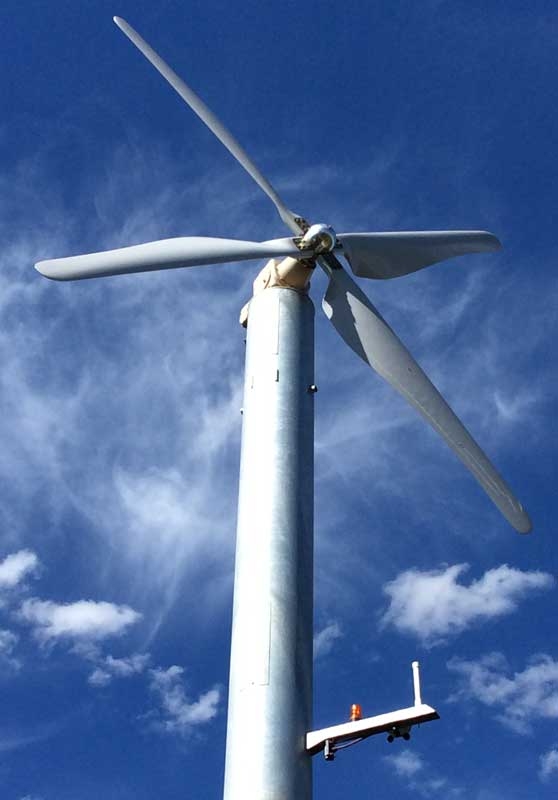Damaging frosts typically occur after a cold, cloudy day followed by a still night with clear skies.
The earth quickly radiates any stored heat after sunset and an ‘inversion’ layer occurs with the air being coldest near the ground with a warmer layer of air above it.
The degree of injury depends on the minimum temperature reached, the rate at which the temperature falls and the amount of time below a critical temperature.
Critical temperature is defined by Young (1966) and Johnson and Howell (1981) as “the lowest temperature a bud (or shoot) can endure for 30 minutes or less without injury”.
However, it’s not all about avoiding catastrophic loss. The aim is also to protect against cold injury to increase a grower’s current yields and improve the quality of the fruit, whilst ensuring continuity of supply or shelf space.
Assessing frost risk is the first step
Site selection is still the key to lowering frost risk. Crops become more susceptible to frost damage when they are located at high elevations, in low lying areas where cold air settles, and next to obstacles to air movement such as tall vegetation, levees and buildings.
Orchard design should allow for orienting tree rows in the direction of predominant slopes to promote air movement downslope and through the orchard. In flatter areas, orient trees in the direction of prevailing wind.
Methods to protect against frost
After selecting the location and orchard design/orientation, methods to protect against frost and cold injury fall into one of four main groups:
-wind (frost fans or helicopters)
-water sprinkling
-heat introduction
-orchard management/maintenance practices (such as removing ground cover).
Tools and services
At the feasibility stage, there are a number of tools and services available to understand the microclimate even within the orchard.
Data loggers can be used to capture night time temperatures both at ground level and above the ground to see how strong the ‘inversion’ layer is.
Climate consultants can also provide site specific scientific assessments to help growers make an informed decision around the most effective type of frost protection for their situation and how best to place it throughout the orchard.
Frost fans—a proven technology
Frost fans are a well proven technology for mitigating the devastating losses that can occur from a significant frost event.
Many growers use frost fans as a tool to combat cold injury by programming them to start automatically based on a preset temperature.
Where once frost protection systems would have been used only when a serious frost was forecast, now frost fans will start automatically to prevent damage from cold events that may only last a few hours in the middle of the night or early morning.
Frost Fans work by utilizing warmer/drier air from the ‘inversion’ layer to create air movement at the fruiting/flowering height in orchards on still cold nights—preventing damage to flowers, soft tissue and fruit.
Many growers have moved away from using water sprinkling in preference for frost fans.
Their reasons include the amount (and cost) of water, risk of sprinklers freezing and the mud created which makes orchard maintenance and access harder.
Anecdotal evidence from growers has shown that while the use of frost fans can save a crop from total loss in a severe frost, they can play a significant role in improving the yields and quality of fruit that can slowly be eroded by multiple previously unrecognized cold events.
Frost fans are prevalent in New Zealand and Australia’s growing areas, with FrostBoss™ fans being used in vineyards and orchards managed by large corporates, through to independently owned, family run businesses.
Click here to read more from our customers and why they prefer FrostBoss™ fans.
Australian Frost Fans
Australian Frost Fans is the sister business to New Zealand Frost Fans, which manufactures the FrostBoss range of frost fans.
The FrostBoss C49 (4-blade machine) is the best-selling machine in Australia and NZ. It was developed with help from former Team New Zealand aerodynamics research engineer, Richard Karn, to optimize noise reduction by using a greater blade working area and slower rotational speed than a 2-blade fan. In addition, the much higher blade passage frequency of the 4-blade fan means the noise signature no longer has a low frequency beating sound, similar to an Iroquois helicopter.
Along with the FrostBoss C49, the FrostBoss C59 (5-blade machine) is the quietest machine on the market. Over 400 FrostBoss wind machines are sold annually throughout NZ, Australia, Turkey, Portugal and Canada covering a variety of crops. Together, the two businesses regularly service more than 2000 machines in NZ and Australia.
The remote monitoring option enables growers to access real-time monitoring of fans around the world, together with text alarms and historical data and graphs on temperature, run-hours and machine performance.
As well as supply and installation of FrostBoss frost fans, Australian Frost Fans service and upgrade most makes of frost fan. You can read more about Australian Frost Fans and the FrostBossrange at aussiefrostfans.com.au
Contact Ben Daking, Australian Frost Fans
phone +61 4 4811 1384 or 1800 797 629
email
aussiefrostfans.com.au
See this article in Tree Fruit May 2017





















